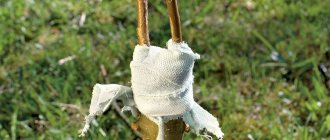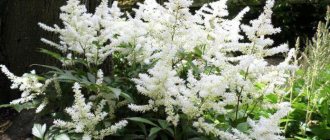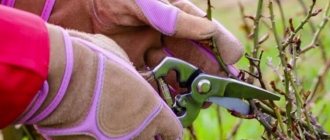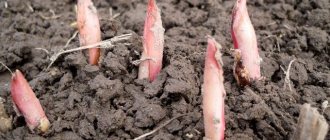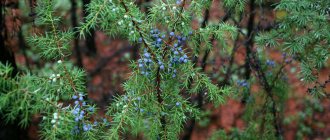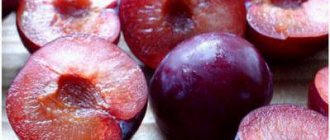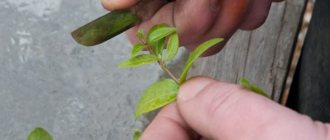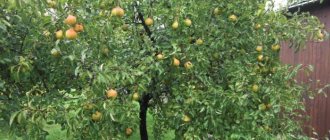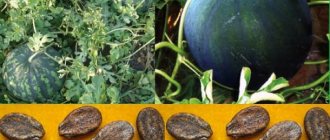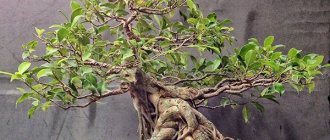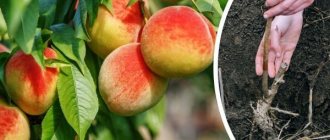Growing plums in the Urals: what is needed for this
In regions with cold climates, even relatively heat-loving crops can be grown. In this case, it is worth taking into account the peculiarities of agricultural technology. In the Urals, plums grow well if you choose the right planting material, place on the site, and pay attention to other nuances.
Plums should be planted on small elevations, not in lowlands. If groundwater is too close, it can negatively affect the growth of the root system. In this case, in winter the roots will freeze, which will lead to the death of the trees. Plums grow well on loam. Acidic soil is not suitable for them. It is better to plant fruit crops in open, not shaded areas.
Climatic characteristics of the region
The climate in the Urals is considered not very favorable for growing heat-loving fruit trees. This region is characterized by difficult climatic conditions. Summer in the Urals is usually cold, and precipitation falls unevenly. In the western regions of the Ural region there is more precipitation, and in the east the climate is drier.
How to prepare a site for planting
Growing plums in regions with harsh climates is not difficult, following certain rules. First of all, prepare a place for planting:
We decide on the site. Plum grows well in a space protected from drafts and wind. The presence of sunlight is one of the main conditions for the good development of a seedling.
What kind of soil does plum tree prefer? Trees grow better on loose, sandy soil with a high content of nutrients. Stagnation of water is detrimental to plums. Flat areas where moisture does not accumulate after rain are suitable.
The planting hole is prepared in advance: during spring planting, the hole is filled with nutritious soil in the fall. For planting in autumn and summer. The size of the hole is the size of the root system of a seedling. Depending on the composition of the soil, potassium-phosphorus fertilizers and rotted manure are applied. Heavy soil is loosened with sand. Acidic soils are deoxidized with wood ash and lime.
Have you decided to plant several trees on your property? The recommended distance between holes for tall varieties with a spreading crown is about 4 meters. For low-growing varieties - from 1.5 to 2.5 meters.
When is the best time to plant plums?
It is better to choose the time of planting plums taking into account the climate in the region. You can plant a seedling in spring or autumn, but you need to take into account some nuances. For the Urals and northern regions, such work in the garden is recommended to be carried out in the spring.
When planting plums in the fall in the Urals, the survival rate of the tree is lower. There is a higher risk of death of the fruit crop. The root system of the seedling after transplantation is quite weak. In severe frosts, the plum tree may die. To reduce risks, plums are planted in the Urals from late September to late October. From the moment of transplantation until the onset of the first frost, at least 1-1.5 months must pass. During this time, the tree has time to take root. Planting it before September is also risky. The sap flow is still very intense. Some varieties just finish bearing fruit in September.
Planting plum trees in spring has many advantages:
- the risk of death from sudden cold weather is minimal;
- the supply of moisture in the soil after the end of winter allows the lucha seedling to take root and grow;
- During the process of seedling growth, the gardener has the opportunity to quickly respond to all changes (pest damage, lack of moisture).
It is better to prepare the planting hole in the fall. Over the winter, the soil will settle down and when planting a tree, you will be able to immediately dig it down to the required depth, avoiding deep deepening of the root collar.
If you fail to plant a tree within the recommended time frame in the fall, there is no need to take risks. It is better to place it in a large pot with fertile soil, cover it with soil and compact it. Keep the seedling in a cool room. In the spring it can be planted in open ground. The ideal time to plant is a cool, cloudy day without rain.
On a note!
The plum tree must be planted before the leaf buds bloom on it. The tree should still be asleep. At the same time, the air temperature at night should not fall below + 5°C.
Seedlings with a closed root system take root much better. Beginning gardeners should purchase such planting material, despite the high cost. Saplings with an open root system require more careful handling.
Variety selection
The mistake of many gardeners is to choose a variety solely based on the fruits (depending on color, size, taste) and the yield of the tree. This approach is fundamentally wrong, and you need to focus on completely different characteristics:
- Plum ripening time. The fruits can ripen from July to October. If the summer in the region is short, you should choose varieties of early or medium ripening. Late varieties are preferable for the southern regions.
- Spreading of the crown and height of the tree. Many people do not take this factor into account; as a result, a compact tree is planted at a great distance from other crops, or, conversely, a plum with great growth power is placed near other trees.
- Zoning is one of the main indicators of successful establishment. A variety is considered zoned if it grows in open ground under local conditions without loss. Unregistered southern varieties often die after the first wintering.
- Frost resistance is the ability of a plant to tolerate negative temperatures up to a certain limit. If the frost resistance index of a plum is less than the temperature in winter, then without shelter the tree will freeze.
- Winter hardiness is an indicator that reflects the totality of unfavorable winter factors affecting the plant. Among them are sudden temperature changes, thaws, drying out, and recurrent frosts.
- Self-fertility is the ability of a plum to bear fruit without a pollinator. Self-fertile plants can be planted in the singular, while self-fertile varieties need a pollinator. It is recommended to plant 2-3 representatives of different suitable self-sterile plum varieties with the same flowering period in the garden.
If there is not enough space to plant several specimens, you can graft several branches of other varieties onto one plum tree to cross-pollinate each other.
Plums for the Urals and Siberia: the best varieties
In the Urals and Siberia, Ussuri varieties of plums take root best. They are highly resistant to cold climates and bloom early, which is very important in short summer conditions. Most varieties are not self-pollinating. For this reason, experienced gardeners recommend planting several varieties in the garden at once:
- Pearl of the Urals. One of the most popular varieties of plums that grow well in the north is the Pearl of the Urals. The trees grow tall and spreading. The average height is 3-3.5 m. Up to 30 kg of fruit can be collected from one tree per season. The fruits of the Pearl of the Urals plum are dense, with yellow flesh and pinkish skin. They have a sweet and sour taste and are suitable for both fresh consumption and canning. Such plums store well and do not crack.
- The pride of the Urals. Breeders bred this plum in the middle of the last century by pollinating the Zhemchuzhina variety. The trees grow very tall (up to 4 m) and spreading. The fruits of the Pride of the Urals plum are red, with yellow flesh. The variety is considered very successful. It is actively grown in the northern regions. Gardeners love it for its exceptional frost resistance, unpretentiousness and other valuable qualities.
- Ural prunes. The variety is popular among gardeners. Plums grow no more than 2 m in height, but they are very spreading. Productivity is average. From one tree you can get no more than 15-20 kg of fruit. Ural prunes are suitable for drying. The skin of the fruit is blue, and the flesh is grainy and not very juicy. The pulp is easily separated from the stone and has a creamy color.
- Ural red. The variety is decorative and attracts attention with its unusual appearance. The leaves of such trees are not green, but reddish, with purple veins. The fruits are cone-shaped. They are very sweet. The skin of the fruit is red and the flesh is bright yellow. They can be consumed fresh or processed into jams and marmalade. Ural red has good yield. From one tree you can collect up to 25 kg of fruit. The crown is very spreading and dense. The branches are strewn with fruits.
- Sinilga. The variety is characterized by early ripening. The tree grows up to 2.5 m in length and has a pyramidal crown. The variety tolerates winter well and is characterized by increased resistance to the formation of frost holes on the bark. The ideal pollinator for it is the Ural Red variety. Sinilga's fruits are large. They hold firmly to the branch and do not fall off, which is a valuable quality. Even overripe plums remain quite dense and very tasty.
- Uyskaya. The popular variety is characterized by high yield and frost resistance. These trees are tall, spreading, but with a sparse crown. From one tree you can collect up to 20 kg of very large, reddish-yellow fruits. They ripen quite late (by the end of August or even the beginning of September). For this reason, the Uy plum is considered an autumn plum. The main disadvantage of the variety is its tendency to be attacked by aphids. In the absence of preventive treatments, the crop may be lost. Treatment with insecticides in this case is mandatory.
- Snow White. A very interesting variety that enjoys well-deserved popularity. It received this name because of its unusual fruits, which are pale yellow in color and covered with a dense waxy coating. Thanks to this coating they appear almost white. Snow White has a rich, sweet taste. It can be eaten fresh or made into jams. The peculiarity of this variety is its spreading crown. The tree grows up to 6 m wide. This must be taken into account when planning the site. Snow White is very frost-resistant. It can withstand temperatures down to -40 C.
- Pioneer. A popular variety that is obtained as a result of open pollination of the Ussuri plum. The tree is very tall and spreading. Productivity is high. Pioneer fruits are medium-sized and smooth. The pulp is dense. Plums are easily transported. This variety is characterized by a high sugar content in the pulp.
- General's. The variety was bred in the Far East. This plum is highly resistant to adverse environmental conditions. She tolerates cold well. The fruits are sweet, with a rich taste. A special feature of the variety is its unusually large fruits. Their weight can reach 50 g. Thanks to this, the variety got its name. Photos of the tree can be found on the pages of specialized publications.
- Blue Sweet. The columnar hybrid looks very unusual. Its peculiarity is the almost complete absence of side branches. The tree grows up to 2 m in length, but takes up very little space. Some gardeners plant columnar hybrids along the edges of the plot. This looks attractive and protects the area from prying eyes. Blue Sweet's fruits are pink and very large. The description of this variety states that the weight of one fruit can reach 40-60 g, which is very impressive. The pulp is sweet and juicy. Productivity is high. The hybrid is not capable of self-pollination, so other species must be planted on the site. The Stanley variety and the Blue Free hybrid are suitable for these purposes.
- Imperial. The new columnar hybrid grows well in the northern regions and the Urals. It is characterized by increased frost resistance and a short period of fruit ripening. The hybrid is resistant to the most common fungal diseases and is little susceptible to attack by pests. Seedlings are expensive, but gardeners can save on insecticides and herbicides. The fruits of the Imperial hybrid are yellow, the flesh is juicy, soft, and has a honey taste. The tree grows up to 2 m in height. There are almost no side branches. Reviews about this hybrid are very good.
- Yellow Khopty. Self-fertile variety, common in the Urals. For pollination to obtain a good harvest, it is not necessary to plant other types of plums nearby. The fruits of Yellow Khopta are very small and yellow in color. At the same time, the yield is above average. The trees are not tall, but spreading. The branches are strewn with bright fruits. Yellow Khopta has a very unusual taste. It is sweet, with a slight sourness. This plum can be eaten fresh or made into jam.
- Chemal's gift. The variety of Siberian selection was included in the state register in 1991. The trees are highly cold-resistant and resistant to the formation of frost holes. At the same time, they are more susceptible to damping out than others. The fruits are small, pink-orange in color. Chemala's gift begins to bear fruit 3-4 years after planting in a permanent place. Subsequently, fruiting is irregular. This is the main drawback of the variety.
- Shershnevskaya. The Chinese plum variety is popular in the northern regions. It grows well in the Urals and is resistant to fungal diseases. The fruits of this plum are small, with red skin and yellow flesh. They have a rich taste. Shershnevskaya bears fruit well even in unfavorable conditions. The variety is considered one of the most productive. The fruits can be eaten fresh or made into jam.
Principles of planting and agricultural technology
It is recommended to plant plums in open ground in a certain sequence. To plant a seedling you need:
- Dig a hole in the area 80 cm deep and about 60 cm in diameter. These are approximate parameters that can be adjusted depending on the size of the root system and its type.
- You need to drive a peg into the dug hole. Place the seedling vertically and straighten the roots.
- The soil dug out of the hole must be mixed with fertile soil and compost. You can add a little peat. Mineral fertilizers should also be used as an additive. For 1 seedling it is enough to add 2/3 cup of superphosphate, 3 tbsp. l. potassium salt, 1 glass of ash.
- Cover the seedling with a mixture of soil and fertilizer and tamp it down lightly. The root collar of the seedling should be located 3-4 cm above ground level.
- Water the tree with water. You can first keep it warm, warming it to a temperature several degrees higher than the ambient temperature. The tree is watered with water at the rate of 2-3 buckets per seedling.
- Tie the plum to a stake to secure it in place. In this case, the tree will grow strictly vertically, and not at an angle.
On a note!
There are fundamental differences between planting in autumn and spring. In the spring, it is recommended to add 1/3 of a bucket of rotted manure to the soil to sprinkle the seedlings along with fertile soil and mineral fertilizers. It is prohibited to apply organic fertilizers in autumn. This can trigger growth, which is not necessary before the start of winter.
The distance between seedlings should not exceed 3-4 meters. For spreading varieties, this parameter can be increased. Columnar varieties and hybrids can be planted at a distance of 2 m from each other. It is better to place varieties that bloom at the same time nearby so that the flowers are better pollinated.
The tree trunk circle must be mulched with straw, freshly cut grass or tree bark. After watering, such a shelter will retain moisture in the soil.
We buy seedlings
It is best to buy plum tree seedlings in specialized nurseries for growing garden plants, since in spontaneous markets there is a high risk of running into a diseased tree or being deceived and buying the wrong variety that you would like. In nurseries, plums are most often sold on so-called seed rootstocks - these are rootstock plants sprouted from seeds, onto which a scion - another plant - is grafted. This is how we get the same tree that will later give us fruits. Trees grown from these seedlings begin to bear fruit early and abundantly.
You can also sometimes purchase your own rooted seedlings, that is, those grown from root shoots or cuttings. They are good because if the tree freezes, it can be restored, and it is also convenient to grow seedlings yourself.
It is best to choose plum seedlings that meet the following parameters:
| Parameter | Numeric value |
| Age | 1-2 years |
| Plant height | 110-140 cm |
| Barrel diameter | 1.1 to 1.3 cm |
| Trunk height before branching | 40-60 cm |
| Trunk diameter at 10 cm from the grafting site | 1.3-1.7 cm |
| Branch length | about 15-20 cm for a one-year-old and about 30 cm for a two-year-old |
| Root system | About 4 roots from 25 cm long |
Following this table, it will be more convenient to choose the right plum seedlings.
Plum care
To get a good plum harvest, not only planting is important, but also care. Caring for trees is quite simple. There is no need to process them immediately after transplantation. The first treatment should be carried out after 2-3 weeks. It is better to spray the tree with 1% Bordeaux mixture. In the fall, after transplantation, the seedling is no longer watered. In spring, watering is required starting at the end of March. In dry weather, 2-3 buckets of water should be poured under each tree once a week. There are no strict recommendations regarding watering. You need to focus on soil moisture. The soil in the tree trunk circle at a depth of 20-30 cm should not dry out. Every autumn, the tree trunk circle needs to be dug up and fertilized at the rate of 30 g of superphosphate and 20 g of potassium salt per square meter of circle. In the spring, an additional 30-40 g of urea is added to each tree.
Winters in the Urals and northern regions are harsh, so trees are insulated in late autumn. After mulching the tree trunk circle, you need to additionally cover it with spruce branches. The root collar should be hidden. In the first few years after transplanting a seedling, you can wrap the tree trunk with agrofibre or burlap. This not only protects from frost, but also prevents rodents from gnawing on the bark.
How to plant and grow a tree
Growing plums in the Urals is not much different from tree farming in other regions. But you need to choose the right time for planting so that the seedling has time to take root and grow stronger.
See also
How to properly graft plum trees in summer, spring and autumn, methods and technologies for beginnersRead
Preparation of planting material
For cultivation, it is necessary to select crops that are suitable for the Ural region. The hybrid must be a winter-hardy species and not be damaged by spring frosts.
When purchasing a plum seedling, make sure that it has a strong root system. The roots should not be dry or covered with rot. Annual seedlings usually reach 1-1.3 meters in height.
If the plum is prepared for spring planting, then it is buried in the grooves to a depth of 40 centimeters for the winter. Biennial tree specimens take root the fastest.
Timing and technology of planting
In spring, plums are planted as soon as the soil thaws, within 2 weeks. Then it is better to prepare a hole in the fall with a depth of 40-50 centimeters and a width of 70.
Autumn planting is carried out 1.5 months before frost. The hole is dug within 2 weeks. Be sure to add a bucket of humus, superphosphate and potassium salt to each hole. Fertilizers are mixed with the fertile layer and filled into the hole. For looseness, you need to add coarse sand.
The distance between seedlings can reach from 1.5 to 4 meters depending on the variety and crown width in the future . Self-sterile plum types need pollinators nearby.
Conditions for good growth and fruiting
To plant plums, choose a place well lit by the sun and sheltered from the wind. The soil needed for the crop is nutritious; loamy chernozem is suitable. The acidity of the garden soil should be neutral, and groundwater should lie no higher than 1.5 meters to the surface.
Regularity of watering
The first time they irrigate the ground around the plum after planting, using up to 20 liters of water for each seedling. During the summer, the crop should be watered once every two weeks, increasing the frequency during the hot and dry season.
For an adult plant, watering is reduced to once a month. It is also useful to sprinkle the tree by spraying the crown in the evening in hot weather. Mulching around the tree trunk will help retain moisture in the soil.
Foliar and root fertilizers
In the first year of a plum’s life, the nutrients it received when planted are sufficient. Water the trees with a nutrient solution of urea at the root in the 3rd year of the plant’s life. Foliar feeding is carried out with the addition of urea, 2 tablespoons per 5 liters of urea solution. The procedure is carried out in May. At the beginning of summer, feed with nitrophoska, 30 grams of product per bucket of water. Feeding should be foliar.
In August, the grooves around the plum are shed with organic and mineral solutions. To add organic matter, use chicken manure or humus; for minerals, use wood ash (70 grams) per bucket of water with superphosphate and potassium salt (15 grams each).
Tree trunk care
The tree trunk circle is designated during planting with a radius of one meter. It must be constantly loosened and freed from weeds. Mulch is applied around the plum tree at the end of winter on the snow, and in the fall, when digging, peat or humus is embedded in the ground. The circle is freed from mulching when the summer is rainy and there is already enough moisture.
Forming the correct shape
Plum trees are pruned regularly, in spring and autumn. It is needed to form the crown and thin it out. The procedure is carried out with well-sharpened tools: pruning shears, saw, garden knife.
After pruning, the branches are coated with varnish or disinfectant solutions.
In the first year of life, the tree is pruned so that the trunk is a meter high. The next year, skeletal branches of the 1st order are formed, and the trunk is shortened by one growth bud. In an adult tree, you need to free the trunk from the side shoots, cutting off last year's growth by half.
In the Urals, it is better to form a crown in early spring, and carry out sanitary and anti-aging pruning in the fall.
Preventive actions
For preventative purposes, plums should be sprayed with copper sulfate 1% or Bordeaux mixture 1% 2 times a year. The tree is treated once in the fall after the leaves fall. It is sprayed a second time in the spring before sap flow begins. These measures help prevent infection by fungal diseases and reduce the risk of pests. If the tree is already infected, the treatment can be repeated after 2 weeks.
As protection against aphids, leaf rollers and other harmful insects, spraying is carried out with Inta-Vir, Karbafos and other popular and effective insecticides. It is better to carry out treatment if signs of damage are already present. This should not be done in advance, as the drugs are not safe.
On a note!
It is prohibited to spray plums with insecticides and herbicides during the flowering period of the trees. After the flowers fall off, treatments can be carried out, but it must be taken into account that at least 3 weeks must pass from the moment of last spraying to harvesting the fruits.
Mistakes of novice gardeners
When growing plums in the Urals, novice gardeners often make mistakes. If trees grow poorly, the leaves turn yellow, spots appear on the bark, you need to pay attention to this and, if possible, correct the situation. The most common mistakes include:
- planting in an unsuitable area (in the shade or in a lowland where groundwater is high);
- planting too deep (if you plant a seedling deeply, the root collar ends up below ground level and the trunk gradually becomes damp);
- dense plantings (if trees are planted too close, the risk of developing fungal infections increases, plums suffer from lack of light, branches stretch upward, which makes it difficult to collect fruits and leads to loss of yield);
- lack of pollinating varieties (in the Urals, mostly non-self-fertile plums grow, so you need to not only plant several trees on the site, but also select the right varieties so that flowering occurs at approximately the same time);
- incorrect dosage of fertilizers (lack of nutrients in the soil leads to a decrease in yield, but you should not get carried away with fertilizers either, as this leads to fattening, the appearance of a large number of spiny branches, and a decrease in the quality and safety of fruits);
- early pruning of the crown (if you trim branches too early, before the end of sap flow, the risk of infection with fungal diseases increases);
- untimely removal of basal shoots (over time, basal shoots form near the plums, which must be removed so that they do not draw back the juices and obscure the trunk).
In the Urals and other northern regions you can get an excellent harvest of plums. To do this, you need to plant the seedlings correctly and follow the basic principles of agricultural technology. The choice of variety is also of great importance. Not all types of plums grow in regions with cold climates and are characterized by increased resistance to temperature fluctuations.
